The Babcock yard at Rosyth is positioning itself for naval exports and expanded capacity, with executives confirming that plans are advancing for a £1 billion contract to build four frigates for the Danish Navy. The site is also shortlisted for a Swedish programme covering up to seven ships.
At a press briefing on Thursday, Babcock Chief Executive David Lockwood OBE and Admiral Sir Nick Hine KCB, Chief Executive of Babcock Marine and former Second Sea Lord, stressed that Rosyth is now central to Britain’s ambitions to re-establish itself as a major ship exporter.
The prospective deals build on the five Type 31 Inspiration-class frigates ordered for the Royal Navy, the first of which, HMS Venturer, was rolled out in May and is now fitting out in dry dock. HMS Active and HMS Campbelltown are under construction, with the aim of delivering all five ships by 2030.
Sir Nick told journalists that the Type 31, known internationally as the Arrowhead 140, is designed to meet urgent alliance needs. “It’s the ship that navies need. It’s affordable and adaptable. That’s never been done before. The future for Rosyth looks really good,” he said.
Lockwood described the Danish and Swedish campaigns as “live and highly competitive,” noting that France is backing a rival bid in Stockholm. “Nothing is won until it’s won, but we believe the Type 31 is the best fit for what they want and we can show how we will deliver them. We are confident, not complacent,” he said.
New hall and expansion potential
Executives confirmed that Rosyth’s covered build capacity could be expanded with a second hall on the scale of the existing Venturer Building, allowing two additional frigates to be assembled side by side. This would provide both buffer storage for pre-outfitted blocks and the ability to run a parallel Arrowhead 140 line if export orders come in. The additional hall would also reduce scheduling conflicts with carrier refits and maintenance of Royal Navy auxiliaries in the dockyard.
Sir Nick has set a target of 31 ships built worldwide by 2031, achievable through licensed construction as well as UK work. The design is already in production in Poland and Indonesia, with Babcock teams working abroad to support local yards.
Even inside the current Venturer Building, work on the latest ships in class is well underway. Journalists were shown a new ‘q-layers’ ship-painting machine, an automated system that coats the hull far faster than traditional methods, with less wastage and fewer stoppages. The system uses 20 percent less paint, representing a significant saving, and allows other teams to continue work on different parts of the ship while painting is in progress. For Babcock, it is a clear example of how digital processes and automation are reshaping modern shipbuilding.
The workforce is also exploring the rollout of Augmented Reality headsets to streamline workflows. These wearable displays guide operators step by step through complex production and fitting tasks, reducing errors and cutting time in training and execution.
Panel line productivity and workforce growth
Workers on the panel line told the UK Defence Journal that output has already risen significantly in the past six months as new efficiencies and digital methods are applied. Both Lockwood and Hine pointed to this as proof that Rosyth can rapidly scale throughput if new orders are secured.
Lockwood highlighted the recruitment of more than 350 Production Support Operatives (PSOs), many of them older workers retrained after redundancy. “Their stories are often the ones visitors remember most. People tell me we’ve saved their lives or their families. It’s something I am most proud of,” he said. Babcock has also recruited 400 apprentices and aligned with local colleges to ensure a pipeline of skilled workers, while exploring ways for experienced welders and fabricators to transition into trainer roles rather than retire.
With a workforce of 2,500 that could expand to 4,000 if new contracts are secured, Rosyth is positioning itself as a site with the capacity and presence to grow.
A third base for nuclear submarine maintenance
Beyond surface shipbuilding, the site is being considered for a new role in the UK’s nuclear submarine enterprise. In a written parliamentary response, Defence Procurement Minister Maria Eagle confirmed that “the cost of planned infrastructure upgrades at Rosyth Dockyard are £340 million. The cost includes the requirement to deliver a contingent docking facility for HMS Dreadnought during its sea trial period.”
Lockwood told reporters the aim is to make Rosyth capable of receiving nuclear submarines for docking, not dismantling. “The aim is to be able to start bringing nuclear submarines in here again, not to break them up, but working submarines. If you add submarine dismantling, carrier building, Type 31 work, and now the contingent dock, you can really see how this site could become quite a vibrant place.”
Sir Nick added that the requirement is driven by safety and strategy. “As part of the Dreadnought safety case for sailing from Barrow, they need to have access to a contingent docking facility that can take Dreadnought. More broadly, if you are going to have a larger fleet, when you’ve got 12 attack submarines not seven, two bases feels too exposed. Having a third base becomes part of the debate.”
Looking ahead
The question now is how far Rosyth can go. The site already juggles frigates, carrier upkeep and submarine dismantling. Expansion is feasible, both in infrastructure and workforce, but it relies on political decisions in Copenhagen, Stockholm and Westminster. There is opportunity in abundance.
For Fife, the stakes are high. Thousands of jobs and a new industrial identity for Rosyth hang on the contracts now under discussion. Whether this happens will depend not only on the ingenuity of its workforce and the adaptability of its technology, but also on whether governments at home and abroad are willing to commit for the long haul.


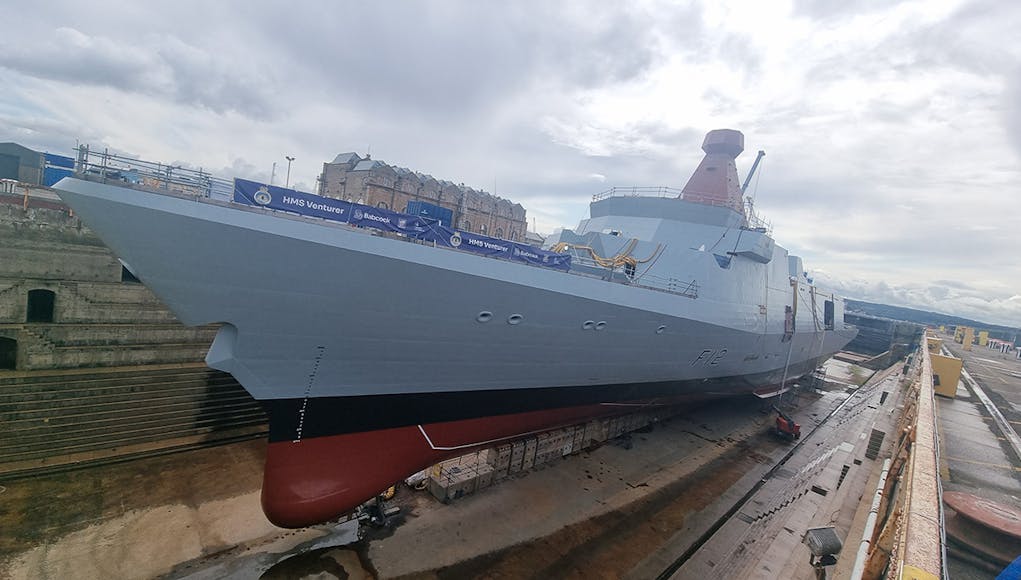


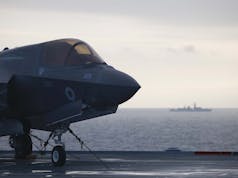
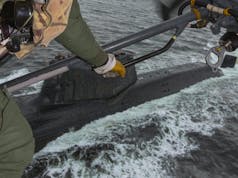

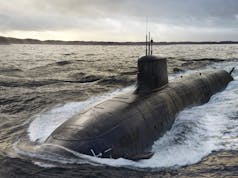


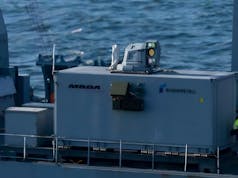


Terrible bodywork.
Can’t seem to post anything on any previous posts now, keep getting Anti Spam messages.
I know what you are thinking !
If not Rosyth then an additional base for RN destroyer/frigates thats North Sea facing too? Could Leith or Aberdeen handle more RN ship’s?
Technically, there is a base there already. HMS Caledonia.
Our Escort numbers are too small to justify it I think, given the costs of building new base infrastructure.
probably North Shields is the best place for the North Sea base for active assets
Hi Pac.
Why is that?
Good to see you back here.
I’d just reopen HMNB Rosyth.
We had Frigate Squadrons there before, and DM Crombie is nearby as an in place DM hub for the munitions.
I believe they have been using it already as it has good facilities and it has quick access to the south and Northern stretches of the North Sea.
Its a fairly large port and has good terminal facilities – could be wrong, but it seems a better starting point for covering the whole Eastern seaboard.
Additionally, it’s got an active reserve (that I think could be expanded (HMS Calliope on the Tyne – from memory) and Newcastle is a good night out (which shouldn’t be. underestimated)
Indeed, HMS Calliope is a RNR facility.
Back in the day Caledonia was, I think, a training base, and HMS Cochrane was the barracks supporting the ships. I was there briefly in the early 1970’s before moving on board a refitted Tribal frigate. At that time there were several frigates based there and the minesweepers were across the river at Port Edgar ( I think). Since one of the main threats we face is to infrastructure in the North Sea I think there is a strong case to increase the presence on the east coast and the forth would seem obvious. Basing Proteus there, and any other ships tasked with protecting the seabed would seem to be obvious.
And I take the point that Newcastle is a good run ashore, as has been posted elsewhere, but I can assure you that you can get into a lot of trouble in Edinburgh, and it’s only 20 minutes away!
How about building some quayside space with cranes etc in Scapa Flow, or rebuilding some of the old logistics ports?
Having a base right in the middle of the North Atlantic would be really useful for extending the endurance for Project Cabot USVs, and having an airfield on e.g. Hoy would slightly improve the range for P8s in the High North.
Also, having both a CSG, or both QEs, at anchor in Scapa Flow would be the coolest photo ever taken.
Scapa Flow is extremely remote. You could rebuild, but it would be very retention negative, abd a pain in arse to resupply.
The run ashore would look a lot like being onboard ship at Scarpa Flow!
As you say retention nightmare.
I can see Rosyth, area, building back up as crews who are with ships at end of build or going through refit will need to be on a larger base.
Precisely. Even during the Wars it was understood that it was only a temporary base, which is why immediately afterward both WWI and II it was ditched.
Not suggesting it as a permanent base for the surface fleet, just a stopping over point in order to extend patrol ranges Northwards for surface ships, USVs and MPAs. A small dockside crew would hopefully be able to integrate with the islanders and so it wouldn’t be too dreary socially speaking. Can’t do much about the weather, though!
You need MRSS and Tides for that….
Why?
We maintain a logistics base in Singapore, what’s the difference apart from the frequency with which it would be used?
Apart from people want the Singers posting it is a vibrant place doing interesting stuff.
Scarpa is in the middle of a large amount of nothingness with more nothingness to add to the nothingness.
Nope invest in RFA – better solution.
Singapore is also nearly 4,000 miles from the nearest Royal Navy base, not 200 as Scapa is.
Ok fair enough, I just like the idea of using a massive anchorage for the Navy again.
How about Shetland? 🙂
Shetland for SAMP/T and Sky Ranger
Scapa Flow is 80 miles North of Lossiemouth (as the crow flies over water), a P8A’s patrol radius is about 1,400 miles, which is enough to fly out to Svalbard, patrol the area, and fly back. I point this out because a) 80 miles for our MPA’s isn’t a huge addition and b) there isn’t a huge need to be flying MPA missions beyond Svalbard, and if there was need to temporarily reach further north or east, there are existing airfields in Iceland and Norway that would serve much better for considerably less investment.
Re Surface ships, the ship type with the shortest sea legs in the RN are the B1 Rivers (unless you count the Archers) with a measly 6,500mile range. Which, to put it into perspective, means it could Sail from Rosyth, visit Reykjavik, sail to Norway, visit the Naval base in Bergen, set sail for Greenland, go sight seeing at the most southern point of Greenland, sail up the coast to Jan Mayan Island, and then return to Rosyth, and still have a bit of fuel left over. And Inspiration and City class frigates have longer ranges. So yes, Scapa Flow is further north, but even used as a refuelling base, you aren’t getting a lot of extra range out of it, and you’re still having to use tankers to resupply the base itself.
“Hopefully the dockside crew would be able to integrate with the islanders so it wouldn’t be too dreary socially speaking.” Hoy (where the naval base was) has a population south of 400. Sorry, but you a) aren’t integrating dock side workers into that community, b) there won’t be a social life to consider dreary. Stormness and Kirkwall (2,000 and 10,000 population respectively) are about an hour away, including having to take a Ferry.
Scapa is a good deep water base for the GIUK Gap, saves time and fuel. Scapa as you pointed out is 80 miles from Lossie, a good Aster site to defend Lossie. Orkney is also a good location for a Bergen/Faroes/Iceland SOSUS operation centre, or a Bergen/Faroe/Icland/Greenland Aster-SAMP/T 1NT control centre.
The SOSUS sites historically were at Edzell and Brawdy.
They then closed and moved to the JMF at St Mawgan.
We seem to have lost all UK infrastructure now, with the modern version of SOSUS, Iocated at Dam Nek in the US.
Cool so I just pointed out why Scapa isn’t a great time or fuel saver for the GIUK gap, but go ahead and ignore all that why don’t you. As for SAM sites: Similar issues apply. Very remote, hard to supply, very retention negative, for relatively minimal benefit. You could put a SAMP-T site at Inverness and have 90% of the solution for probably half the price, upkeep and retention issues.
As Daniele pointed out, SOSUS control has never needed to be physically close to the actual GIUK gap, and with the amount of estate the MOD has with old barracks it would be way more cost effective to restablish the infrastructure on a disused RAF base that already exists than have to build an entirely new base on an Island that has zero existing infrastructure.
Hi mate.
MoD spend a lot of money on the defence estate.
Which I support, as I want defence to have as wide a footprint as possible.
But new build….it’d cost a fortune… I cannot see it.
When has the MoD built an entirely new military facility in living memory in the UK at a non current site? Cannot think of an example, military wise, bar Abbey Wood. Updated or new infrastructure is usually on legacy, existing sites.
And Scapa Flow is way into past history.
MPA in the South Atlantic also comes to mind.
Interestingly, and talking more remote areas of Scotland, there are other jetties available at the POL Depots at Loch Striven, Loch Ewe, and Campbeltown. Not really the same as a base, but still there. And then there are the Z Berths at Broadford Bay and Rothesay.
Wider Defence wise, there have indeed been new sites built or acquired, and not previously used, but in the Intelligence and CT Police area, which I of course won’t list or detail.
On P8, Nimrod used to use St Mawgan, we certainly need more options. Tornado F3 used to use Stornoway Airport, that is a place I’d like to see developed more.
Hi Daniele, You forgot Invergorden, more accurate Inchindown. Battlewagons used to park there for rearming and refueling. Much of the infrastructure is still there all underground.
Morning Ron.
I had no idea they existed! My knowledge is current or Cold War.
I’ve heard the place mentioned by ABC Rodney here many times, but not in relation to fuel.
Looking it up on Wiki, it reminds me of Portsdown Hill. There are old fuel storage tanks under there as well, which I assume could still be used.
Another, non RN example that comes to mind is at Micheldever, I think for the RAF.
You can see part of that from the train.
Whether any could be realistically reactivated I’ve no idea.
Great news. The JEF countries are really coming together. Working well.
Tangentially relevant to the Type 31, but the CAMM-MR made a reappearance at an expo in Poland a couple of days ago. Not much new information, but folding fins and dual-packing can be inferred from the model shown.
Having CAMM, CAMM-ER and CAMM-MR covering 0-100kms AAW envelopes as easy to integrate missiles will be potentially quite significant for the T31 and T26.
Yes maybe also for the T45 allowing it to move to Aster 30 blk 1 NT for IRBM interception while using CAMM MR for long range air defence.
There is a reason that the last two letters are important Modular Missile always was the intention of the program!
So no surprise that a family of missiles has eventuated.
Now that CAMM is fully validated in active engagement and has proved to be rather good as well as having a sensible price point it is selling like hotcakes.
The fact it’s light as you like and takes very little space helps as well, being able to put 38 in a 900 ton corvette is pretty amazing as is the fact it’s a nasty little ASuW weapon..
If the RN wants to increase the lethality of all its ships on a budget it could not go wrong with an across the range CAMM fit for everything
Quad packed!
I think the cold gas ejection system form it’s dedicated launcher is more of a selling point than quad packing. Why waste an expensive VLS.
Yes, but why not take advantage of both features? Even though I advocate developing a new VLS for cold-launch that could be quad packed, in its absence I wouldn’t consider it a waste to go with ExLS or even tactical length Mk41, paying the extra money for quad-packing.
The ability to remain longer on station in a medium threat environment, as we saw in the Red Sea (or even passage through it) makes having more CAMM missiles valuable and there’s only so much space on a ship. Quad-packing as the default across the fleet instantly increases survivability and lethality of the platforms without much in the way of thought, redesign or risk.
People like to play top trumps with the number of SAMs their ships can carry, so quad packing affects exports. Case in point was the number of Hunters in Australia, where BAE touted a redesigned ship to counter the claims that the design didn’t carry enough missiles, which would have expensively increased the number of VLS cells from 32 to 96. Those claims probably would never have arisen if 24 of the VLS had simply been designated quad-packed in the first place, pushing the total missile numbers from 32 to 100 carried with very little redesign and no loss of mission space. Politicians (and social media commentators) rarely dig beneath the headline numbers.
Up to a point, an alternative would be to develop on-station loading mechanisms for the CAMM family. I don’t know why that’s such a tough ask, but it seems to be (ditch the cranes guys). However, that would also mean we’d need some solid support ships to supply the reloads, another sore point, or extra ammunition space on the escorts that could end up as expensive as extra VLS.
Quad-packing across the fleet is the simplest solution.
Jonathan, as much as I like CAMM and the possibilties of CAMM-MR I do wonder on the operational hieght of the missile. CAMM and CAMM-ER has a max hieght of 10,000m. CAMM_MR I am not sure as no details is out yet, 100km range is good but hieght? If we can get CAMM_MR to go 20-25 KM in hieght I am all for it otherwise Aster does high level attacks and CAMM low level.
The height was confirmed by Polish sources to be >20km, so roughly equal to Aster-30 Block 0.
Thanks for update
It’s vital we get submarine refits back on at Rosyth.
Devonport is too small and congested. The navy moved to Rosyth in 1905 for good reason. The US is probably going to have to start to use our facilities at some point because they can’t keep up with even the diminished size of their SSN fleet and we would seem like the only other option available to help.
We spent £500 million building state of the art submarine berths and maintenance facilities (the big hole in the ground is still there on the left of the dockyard at Rosyth) before John Major moved it to Devenport to save a couple of Tory marginals.
Hopefully the navy see sense once again and realise you can’t run and maintain massive modern warships in small congested river ports on the south coast far far away from any kind of heavy industry or workforce that can sustain them.
Due to it’s geographical advantages the central belt of Scotland is the best place in the UK to make and sustain warships (sorry England it just is) because it’s the only part of Britain where you can have direct rapid access to both east and West Coast. It’s also the best place to base those whips because the French navy is no longer the problem and it’s unlikely the Russian Black Sea fleet will be the ones attacking NATO.
Very probable that USN will request maintenance/refit support from both RAN and RN (HMAS Stirling, HMNB Devonport, HMNB Clyde? Rosyth Dockyard) under the auspices of the AUKUS agreement. Predict this will be absolutely essential in order to enable USN to fulfill obligation to provide 3 interim SSNs to RAN during the 2030s. Are the RAN and RN considering the installation of modern versions of submarine nets and surface booms at principal bases? Coastal artillery and GBAD? Marine detachments for perimeter security? Predict the CRINKs will be utilizing UAVs, USVs, UUVs, hypersonic CMs, IRBMs, strategic bombers, any available 5th gen a/c, and possible SF/amphibious ops., in a bid to destroy respective fleets. Modern versions of the attack on Pearl Harbor are entirely predictable.
There are only 3 drydocks in Rosyth, unless you want to spend billions building more
“Babcock has also recruited 400 apprentices and aligned with local colleges to ensure a pipeline of skilled workers, while exploring ways for experienced welders and fabricators to transition into trainer roles rather than retire.”
Kudos Babcock. This is the kind of joined up thinking the country needs 👍
It’s much easier to do in Fife as well because you have the historic oil and gas sectors, new wind energy projects as well as several active shipyards and dockyards around Glasgow all with in a 45 minute drive. There is massive demand for welders that you won’t get in Portsmouth or Devon.
Much the same as a lot of our life sciences congregate between Oxford and Cambridge or our aerospace factories between North Wales and Manchester.
Warton, Salmesbury, and Barnoldswick are all some distance north of Manchester, and they are the fulcrum of military aviation in the UK
Hi folks hope all is well
Do any of you keep getting your posts on here delayed subject to moderation.
I’ve even contacted UKDJ asking the question, so far have had no reply. Which is a shame as I always go to UKDJ for advice and enjoy the posts from you experts out there.
Cheers
George
Hi George.
No, not for a long time.
I’m sure they’ll reply, did you use the contact us form?
Many thanks for your reply Daniele. Yes I believe i did use the form.
Cheers
George
Are you commenting though a vpn? Or try another email. I’ve also sent many emails, and never got a reply.
Hi Coll,
Thanks for your reply. Have been using normal email not vpn.
Cheers
George
Yes they keep disappearing, I have lost some of my greatest thoughts 🤔
Thanks Jim for your reply.
George
Me too.
The work needs to go to devonport . Infrastructure can be easily sorted . Rosyth have had enough of the work of late. Devonport can easily adapt . Just as easily as rosyth did . And there is more space here at devonport.
Work goes to who wins it.
There is NO space at Devenport for shipbuilding
I wonder if they will build Scottish ferries? Or is Turkey the future?
Is it even relevant if there is an active warship industry germinating a renewed supply chain?
If that supply chain can be made cost effective then a big maybe.
The only way it would work is if the sub assemblies could be slotted into fabrication lines that were already very busy as the icing on the cake.
The problem is that the line will be set up to do higher quality welding and finishes than a ferry would ever require. It is hard to run a production line at two quality levels without mess ups.
Babcock is too smart to get stuck building ferry’s.
Their share price would collapse the second they stated they will take an expensive, highly skilled work force and start knocking out the lowest tier of commercial vesell anyone can make above a barge.
There are other commercials and semi commercials like ice breakers that would make more sense for Babcock to build.
Building another construction shed is pretty significant pushing the uk to be able to build 2 T31 frigates a year, the best way to do this would be in conjunction with the government essentially purchasing the spare construction slots and then allowing them to be sold. The UK is still shy 7 frigates and 6 AAW destroyers.. so plenty of reserve orders
Bit of a curveball, how how about start using ex-HMNB Portland?!
I was down there a few weeks back, It’s a huge port but no drydocks or other building facilities, just some very run down buildings.
Great view from the Prison !!!
HMNB Portland is RFA territory,but it is in the wrong area,the South Coast has plenty of capacity with Devonport and Portsmouth,the issue is having a Base in the North.
Do we have the skilled workers to operate another ship building/maintenance yard?
Suppose you could move some people around now from other places but a rapid expansion in the number of apprentices would be required I suspect.
In the end the whole ..workforce thing is always a red herring, it’s never a chicken and egg question with workforce..you always have to build the facility, factory, ship, hospital etc..then recruit and train your workforce up..it always means your capital expenditure projects will be a bit inefficient until your workforce is fully up to scratch.. but without the hospital you cannot train the Drs and Nurses, without the ship you cannot train and develop the crew and without the shipyard you cannot train and develop your workforce.
So when expanding anything the question of do you have the skilled workforce is always a resounding no, that is when really good strategic workforce planning comes in.
Just as well we have got the politician training sorted then, right 😂
Yes the less said about that the better I would say.😵💫😵💫😵💫😵💫
If Babcock can build 4 Danish high-end air defence optimised frigates for £250 million each then that will most certainly be very impressive- the RN should definitely get in on the act and order 4 air defence optimised frigates to supplement the type 45s and provide a viable BMD defence capability.
Babcock aren’t even building the UK’s GP frigates for 250million£
I can’t see Babcock building a high end AAW frigate for £250m. But I can see them building a ship that performs better than the Iver Huitfeld did in the Red Sea for considerably less. The performance of HMS Richmond and its Sea Ceptors – no ESSM, no 76mm OTO – cannot have gone unnoticed. Upgrade the Type 31 NS110 radar to NS200 and fit CAMM-ER and /or CAMM- MR, job done?
If its 1 billion for 4 frigates then it would not surprise me if the Dane’s are not repeating their original mistake and essentially ripping everything out of the IH hulls and getting it fitted into the T31 hulls. It’s how they got the IHs so cheap….
Just because some of the fit out uses government supplied parts or perhaps the final fit out might happen in Denmark and so is excluded from Rosyth contract value, doesn’t mean the Danes are reusing gutted parts from the originals.
No it does not mean they will, but they have form and did it before. Maybe they have learnt a lesson, maybe they have not.
That wouldn’t make any sense, the whole reason the Danes need new frigates quickly is because the systems on board the IHs don’t work. The hulls are fine, which is why they want to retain them as very large OPVs after replacement.
We wish.
Ermm, any Idea what is going on here, can’t seem to post or it’s pending. Have I upset someone and got banned ?
Odd events and now we’re back.
George, why is Portsmouth NB nor BAE Systems never mentioned ? How do the many commentators see its future role during all this investment ?
Hi Chris, we done a similar series on BAE Systems last month.
Taking that job to rosyth will only involve the massive input of Romanians and others of that ilk . Rosyth is full of 6 week course fast tracked welders and pipe fitters and 3 day wonder slingers . Recorded injuries and bad workmanship is quickly and effectively thrown under the rug as much as possible. It’s a proven fact that rosyth can’t even collect a workforce for the work it already has without using cheap labour unskilled then fast tracked pso personnel and Romanians .
Got a problem with Romanians have you?
Yes I have as most of them are tea leafs and chancers .
If this is true then it is huge slap in the face to all those at Devonport who celebrated with Champagne at Rosyth losing out to them for the submarine re fit contract being awarded to Devonport by the traitor Rifkind. Rosyth is the yard that refused to die, A purely political decision that was totally wrong there was good reason for the Dockyard being built at Rosyth and good reason why it should have won that contract and be in use today .So open the Champagne and say a toast to Rosyth Dockyard the yard that refused to Die…